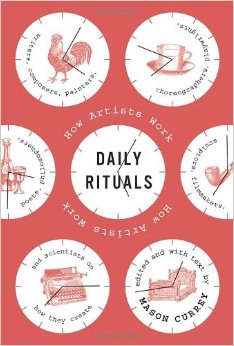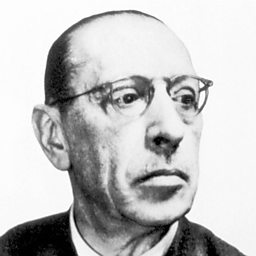Daily Rituals: How Artists Work is a book of vignettes by Mason Currey on the creative routines of master writers, painters, musicians, and other notable figures. Louis Armstrong, George Gershwin, and Glenn Gould are among the giants of music that Currey included in his book. The “daily rituals” range from highly effective working practices to rather dubious indulgences. The book is both interesting and entertaining, but it is certainly not a how-to resource suitable for children who are eager to model all the behaviors of their creative idols (smile). Of the various personalities about which I read, the composer Igor Stravinsky stands out for his commitment to routine, balance, and discipline—so much so that I felt compelled to provide a review here.


In Currey’s book, we learn that Stravinsky, except when on tour, composed every day, regardless of his level of creative drive. He abided by a routine schedule of morning exercise, followed by a continuous four-hour block of time devoted to composition. He worked in private and even shut the windows of his studio in order to remove himself from the notice of others. He explained, “I have never been able to compose unless sure that no one could hear me.” Amusingly, one of Stravinsky’s techniques for overcoming a creative block was performing a headstand, which he felt provided him a sense of rest and clarity. Later in the day, after composing, Stravinsky turned his attention to what he considered to be lighter responsibilities, such as practicing the piano and tending to personal correspondence.
Currey’s vignette on Stravinsky is remarkable in that it shows a major musician embodying so many of the classic principles of effective practice. These ideals include:
- Practice daily, regardless of your mood to do so or not.
- Plan your practice time in advance, establishing a routine schedule if possible. (Here, instrumentalists and vocalists should note that due to the physical nature of their work, breaking up their day’s practice routine into multiple small sessions, rather than following Stravinsky’s four-hour block approach, is advisable.)
- Eliminate distractions from your work environment.
- If experiencing a creative block, take a small break, which might include physical activity.
- Tackle more demanding tasks earlier in the day, when you are likely to have more energy.
When I first encountered The Rite of Spring, sometime when I was around the age of ten, the sheer genius of the music instilled curiosity, wonder, and amazement in me. A young musician, I was easily susceptible to the notion that music was a “gift” that some possessed and others did not. The Stravinsky example illustrates commitment to developing a craft through a regular discipline of work and study. No doubt, Currey’s brief paragraph would have provided me an equally valuable type of inspiration as I was beginning my musical journey.
[…] feu, Petrushka, and Le Sacre du Printemps – but his career lasted several decades thanks to his technique of standing on his head to shake out new […]
[…] window naked, regardless of the season. To clear his mind and aid his creative brain Stravinsky stood on his head. Dickens wrote with a compass to ensure he was always facing north, claiming that it fostered his […]